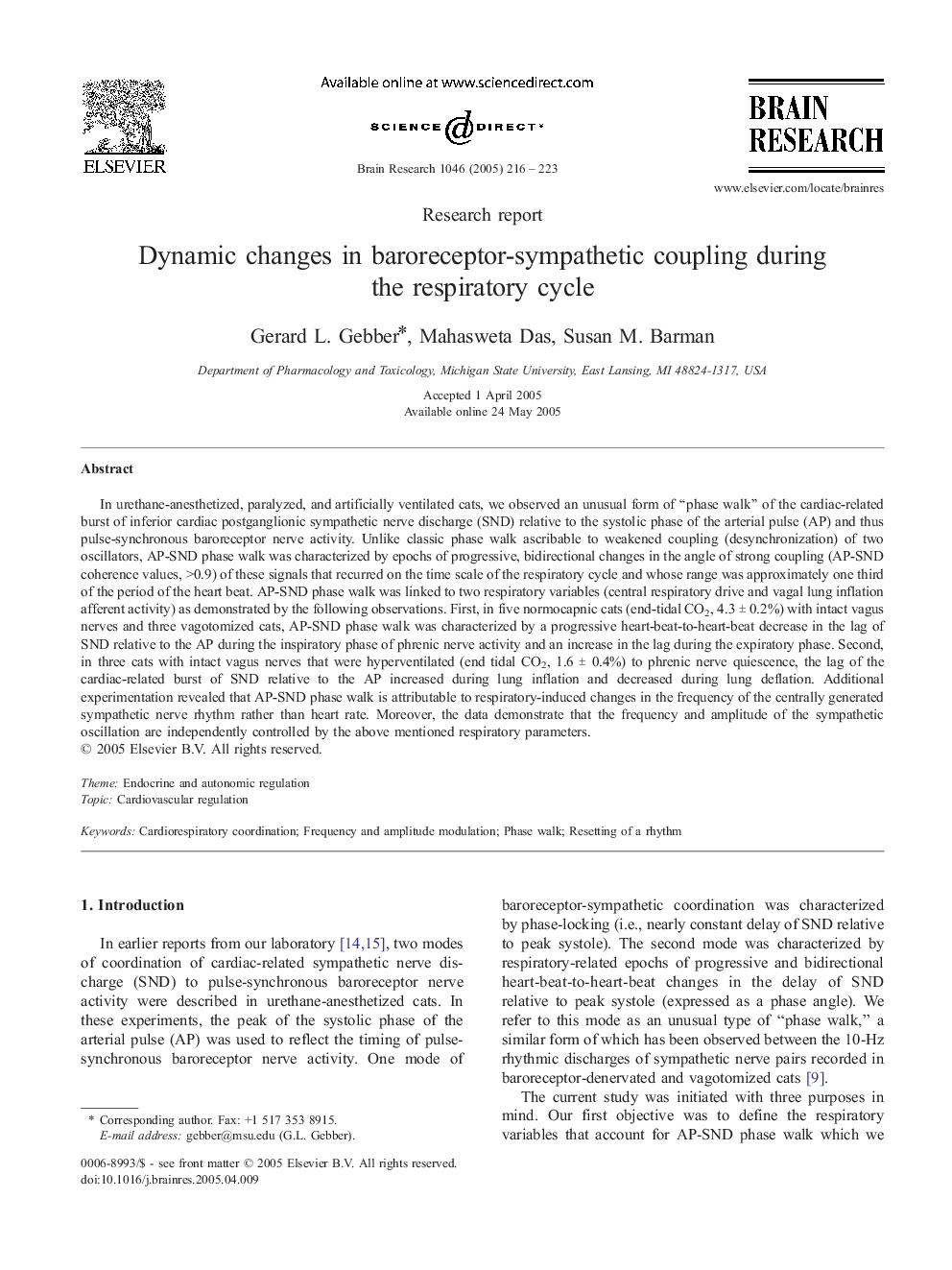| Article ID | Journal | Published Year | Pages | File Type |
|---|---|---|---|---|
| 9416355 | Brain Research | 2005 | 8 Pages |
Abstract
In urethane-anesthetized, paralyzed, and artificially ventilated cats, we observed an unusual form of “phase walk” of the cardiac-related burst of inferior cardiac postganglionic sympathetic nerve discharge (SND) relative to the systolic phase of the arterial pulse (AP) and thus pulse-synchronous baroreceptor nerve activity. Unlike classic phase walk ascribable to weakened coupling (desynchronization) of two oscillators, AP-SND phase walk was characterized by epochs of progressive, bidirectional changes in the angle of strong coupling (AP-SND coherence values, >0.9) of these signals that recurred on the time scale of the respiratory cycle and whose range was approximately one third of the period of the heart beat. AP-SND phase walk was linked to two respiratory variables (central respiratory drive and vagal lung inflation afferent activity) as demonstrated by the following observations. First, in five normocapnic cats (end-tidal CO2, 4.3 ± 0.2%) with intact vagus nerves and three vagotomized cats, AP-SND phase walk was characterized by a progressive heart-beat-to-heart-beat decrease in the lag of SND relative to the AP during the inspiratory phase of phrenic nerve activity and an increase in the lag during the expiratory phase. Second, in three cats with intact vagus nerves that were hyperventilated (end tidal CO2, 1.6 ± 0.4%) to phrenic nerve quiescence, the lag of the cardiac-related burst of SND relative to the AP increased during lung inflation and decreased during lung deflation. Additional experimentation revealed that AP-SND phase walk is attributable to respiratory-induced changes in the frequency of the centrally generated sympathetic nerve rhythm rather than heart rate. Moreover, the data demonstrate that the frequency and amplitude of the sympathetic oscillation are independently controlled by the above mentioned respiratory parameters.
Related Topics
Life Sciences
Neuroscience
Neuroscience (General)
Authors
Gerard L. Gebber, Mahasweta Das, Susan M. Barman,
